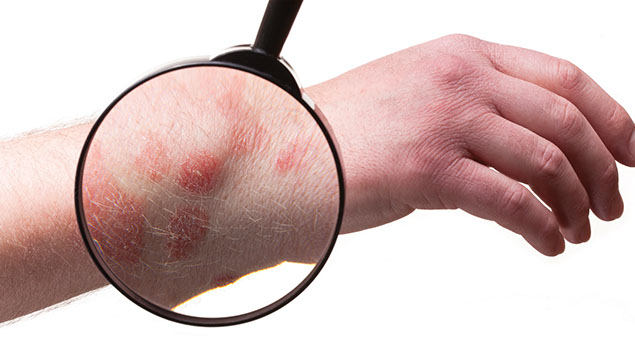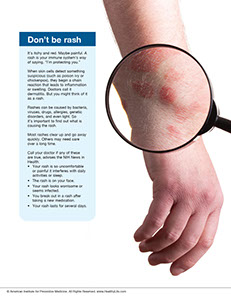SYMPTOM CHECKER
CONDITIONS
Male
Female
Child
Arm, Hand & Shoulder Concerns
Legs & Feet Concerns
Dental & Mouth Concerns
Ear & Nose
Eye Conditions
Head Conditions
Arm, Hand & Shoulder Concerns
Legs & Feet Concerns
Front
Back
Arm, Hand & Shoulder Concerns
Dental & Mouth Concerns
Ear & Nose
Eye Conditions
Head Conditions
Arm, Hand & Shoulder Concerns
Dental & Mouth Concerns
Ear & Nose
Eye Conditions
Head Conditions
Front
Back
Arm, Hand & Shoulder Concerns
Neck Links
Head & Neck Concerns
Arm, Hand & Shoulder Concerns
Neck Links
Head & Neck Concerns
Front
Back
Online Clinic
Wise Healthcare
Don’t be rash

Print on Demand
It’s itchy and red. Maybe painful. A rash is your immune system’s way of saying, “I’m protecting you.”
When skin cells detect something suspicious (such as poison ivy or chickenpox), they begin a chain reaction that leads to inflammation or swelling. Doctors call it dermatitis. But you might think of it as a rash.
Rashes can be caused by bacteria, viruses, drugs, allergies, genetic disorders, and even light. So it’s important to find out what is causing the rash. Most rashes clear up and go away quickly. Others may need care over a long time.
Call your doctor if any of these are true, advises the NIH News in Health:
• Your rash is so uncomfortable or painful it interferes with daily activities or sleep.
• The rash is on your face.
• Your rash looks worrisome or seems infected.
• You break out in a rash after taking a new medication.
• Your rash lasts for several days.
This website is not meant to substitute for expert medical advice or treatment. Follow your doctor’s or health care provider’s advice if it differs from what is given in this guide.
The American Institute for Preventive Medicine (AIPM) is not responsible for the availability or content of external sites, nor does AIPM endorse them. Also, it is the responsibility of the user to examine the copyright and licensing restrictions of external pages and to secure all necessary permission.
The content on this website is proprietary. You may not modify, copy, reproduce, republish, upload, post, transmit, or distribute, in any manner, the material on the website without the written permission of AIPM.
2021 © American Institute for Preventive Medicine - All Rights Reserved. Disclaimer | www.HealthyLife.com















































